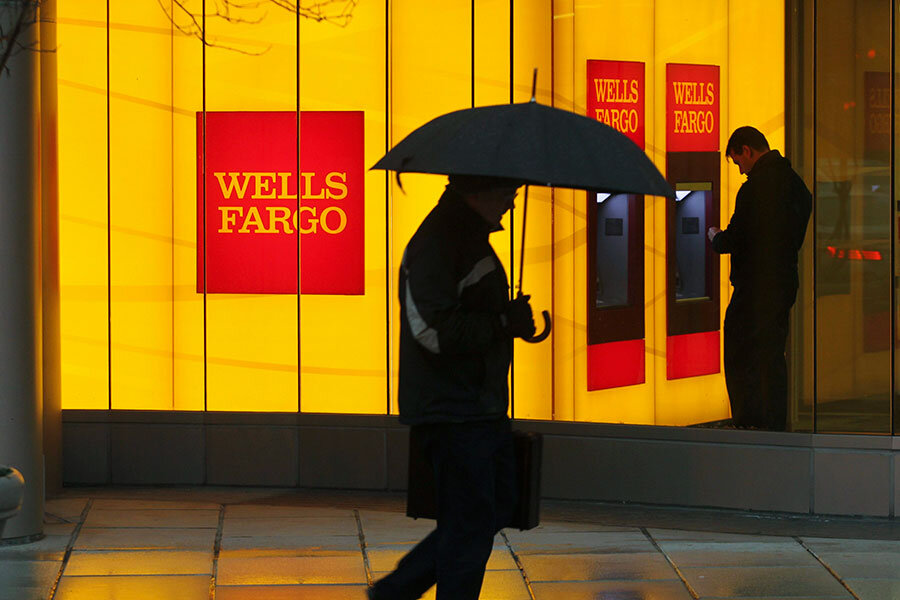Supreme Court confronts racial impact of predatory loans in financial crisis
Loading...
The landmark Fair Housing Act and the continuing fallout from the 2008 housing crisis are converging at the United States Supreme Court Tuesday.
As a legal question, the case involves whether cities should be able to sue banks over damages incurred by alleged Fair Housing Act violations. But beyond the courtroom, the case illustrates how, despite decades of progress under the 1968 Fair Housing Act, racial discrimination in the real estate market appears to remain stubbornly engrained, though in new forms.
Specifically, Miami alleges that Wells Fargo and Bank of America engaged in discriminatory mortgage-lending practices, and that those practices led to widespread defaults by minority homebuyers. The foreclosures have caused the city “significant, direct, and continuing financial harm.”
The Supreme Court’s eight justices will only consider whether Miami can legally bring such a claim against the banks.
If the Supreme Court decides that Miami qualifies as an “aggrieved person” under the Fair Housing Act, the ruling would give cities access to crucial funds and deter banks from continuing discriminatory lending practices, Miami’s supporters say. The banks counter that it would set a dangerous precedent, exposing lenders to endless lawsuits and deterring them from giving loans that can help potential homeowners build wealth.
“This case could be very important and really take the Fair Housing Act in a different direction than it has gone historically, and allow municipalities to enforce fair housing in a way we haven’t seen before,” says Steven Schwinn, a professor at the John Marshall School of Law in Chicago.
Subprime loans and discrimination
Since 1968, the Fair Housing Act – and subsequent legislation and industry changes – have made the housing market far less discriminatory for minority would-be homeowners. But racial discrimination in lending didn’t disappear, several studies suggest.
At first, mainstream banks avoided lending in low-income minority areas, so local homebuyers had to rely on fringe lenders who charged higher rates.
Then, after congressional legislation in the 1980s led to the creation of subprime loans – and Wall Street began bundling those loans and selling them to investors – banks began targeting those neighborhoods. The subprime versions often came with higher rates and tougher penalties.
The practice reached a climax in the 2000s, resulting in mass defaults and widespread foreclosures, including over 2.8 million homes in 2009 alone.
Minority neighborhoods were hit particularly hard by the subprime trend. Studies suggest that black borrowers in 2006 were three times more likely to get a subprime loan than a conventional one; for Hispanics, the ratio was 2 to 1. Whites had slightly better than 50-50 odds of getting a conventional loan.
When the crisis hit, nearly 8 percent of blacks and Hispanics who had borrowed between 2005 and 2008 lost their homes in foreclosure; for whites, it was 4.5 percent, according to one study. Between 2007 and 2009, a typical black household saw its wealth dip 19 percent versus 12 percent for whites.
The problem, groups like the NAACP say, is that minority neighborhoods were targeted for subprime loans unfairly. By many measures, there was little substantive financial difference between some minority neighborhoods targeted for subprime loans and other, predominantly white neighborhoods offered traditional, lower-rate loans.
“Proving these claims are really difficult,” says Morgan Williams, general counsel and the National Fair Housing Alliance, an equal housing opportunity consortium based in Washington. “You need statistical evidence and expertise.”
That’s where the cities have come in. After alleging that Wells Fargo steered some 1,000 minority residents to subprime loans, Baltimore convinced the US Department of Justice to intervene and in 2012 won a $175 million settlement from the bank. The bank, the largest US mortgage lender, has also settled with Memphis in the wake of claims of predatory lending. But other predatory lending cases against it, brought by Cook County, Ill., and Los Angeles, have been dismissed.
How responsible are banks?
Meanwhile, the cascading effects of those original foreclosures are still being felt in cities like Miami.
An amicus brief from the local Fraternal Order of Police chapter and Florida Professional Firefighters describes how foreclosed neighborhoods have become thickets of crime and violence. In addition, a “precipitous drop” in property tax revenue led the city to reduce wages for members of the police department by an average of $10,000 per person, increase health insurance premiums and co-payments, and reduce retirement benefits to the tune of roughly $25 million per year for Fraternal Order of Police members. Firefighters in the city saw comparable reductions.
But siding in favor of Miami would expose banks to liability extending “to all remote-if-unremarkable consequences, stretching as far as the imagination,” Wells Fargo says in its petition. Linking complaints of lost tax revenue to claims of predatory lending would create a causal chain that is “never-ending.”
The US Chamber of Commerce agrees. A ruling against the banks “threatens to undermine the very purposes of the Fair Housing Act by discouraging socially valuable lending to underserved communities by imposing outsized legal risks on such activities,” it adds in an amicus brief.
The case is likely to test the partisan divide on the court, with Justice Anthony Kennedy expected to assume his familiar “swing vote” role. In another case involving Fair Housing Act lawsuits two years ago, he joined the court’s four liberals to rule in favor of civil rights groups.
But with only eight justices on the court, Professor Schwinn says, “this is one of those cases where I suspect a 4-4 split is a real possibility.”







